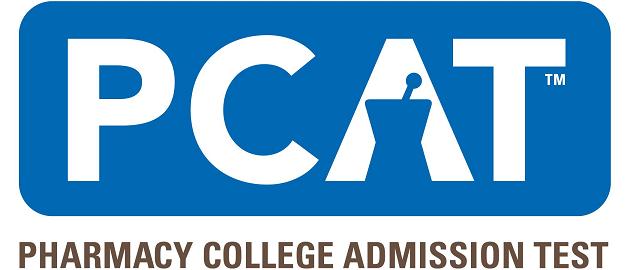The Comprehensive Guide to the Dental Admission Test (DAT)
Introduction
Welcome to the comprehensive guide to the Dental Admission Test (DAT)! If you are considering a career in dentistry, the DAT is an important step in the admissions process. This standardized exam is designed to assess your academic abilities and scientific knowledge in areas relevant to dental education. In this guide, we will explore everything you need to know about the DAT, including its purpose, test format, sections, scoring, and tips for success.
What is the DAT?
The Dental Admission Test (DAT) is a standardized exam administered by the American Dental Association (ADA). It is required for admission to dental schools in the United States and Canada. The DAT assesses your academic readiness and scientific knowledge in areas such as biology, general and organic chemistry, perceptual ability, and reading comprehension. The test measures essential skills and knowledge necessary for success in dental school.
DAT Test Format
The DAT is a computer-based test that consists of multiple-choice questions and interactive question formats. The test is divided into four main sections, each assessing different skills and knowledge areas. Here is an overview of the DAT test format:
-
Survey of the Natural Sciences
- Format: Multiple-choice questions
- Duration: 90 minutes
- Skills Assessed: Knowledge of biology, general chemistry, and organic chemistry
-
Perceptual Ability Test
- Format: Interactive question formats, including angle discrimination, cube counting, paper folding, pattern folding, and view recognition
- Duration: 60 minutes
- Skills Assessed: Visual perception and manipulation of objects in space
-
Reading Comprehension Test
- Format: Multiple-choice questions
- Duration: 60 minutes
- Skills Assessed: Reading comprehension, critical thinking, and analysis of written passages
-
Quantitative Reasoning Test
- Format: Multiple-choice questions
- Duration: 45 minutes
- Skills Assessed: Problem-solving and quantitative reasoning skills
DAT Sections
Let's explore each section of the DAT test in more detail:
-
Survey of the Natural Sciences:
- Number of Questions: Approximately 100 questions
- Topics Covered: Biology, general chemistry, and organic chemistry
-
Perceptual Ability Test:
- Number of Questions: Approximately 90 questions
- Topics Covered: Visual perception and manipulation of objects in space
-
Reading Comprehension Test:
- Number of Questions: Approximately 50 questions
- Topics Covered: Reading comprehension, critical thinking, and analysis of written passages
-
Quantitative Reasoning Test:
- Number of Questions: Approximately 40 questions
- Topics Covered: Problem-solving and quantitative reasoning skills
Scoring on the DAT
The DAT is scored on a scale ranging from 1 to 30, with 30 being the highest score possible. Each section of the DAT is scored individually, and the scores are then averaged to calculate the Total Science score, Academic Average score, and Perceptual Ability score. The PAT score is reported separately. Dental schools consider these scores along with other application materials during the admissions process.
Preparing for the DAT
Preparing for the DAT requires careful planning and dedicated study. Here are some tips to help you prepare effectively:
-
Understand the Test Content: Familiarize yourself with the content and topics covered in each section of the DAT. Review the official ADA DAT Guide and identify areas where you need additional study.
-
Create a Study Plan: Develop a study plan that outlines your study schedule, topics to cover, and practice exams to take. Allocate sufficient time for each section of the DAT and include regular review sessions.
-
Utilize Official Study Materials: Utilize official ADA resources, including practice exams, sample questions, and study guides. These materials are specifically designed to align with the content and format of the DAT.
-
Practice with Timed Exams: Take full-length practice exams under timed conditions to simulate the test day experience. This will help you build stamina, improve time management skills, and assess your readiness for the actual exam.
-
Review and Analyze Your Practice Tests: After completing practice exams, carefully review your answers and analyze your performance. Identify areas of weakness and focus on improving those areas in your subsequent study sessions.
-
Seek Additional Resources: Consider using supplementary study materials, such as review books, online resources, and flashcards, to reinforce your understanding of challenging topics.
-
Form Study Groups: Collaborate with peers who are also preparing for the DAT. Form study groups to discuss concepts, explain difficult topics to each other, and share study strategies.
-
Take Care of Yourself: Prioritize self-care during your DAT preparation. Get enough sleep, eat nutritious meals, exercise regularly, and take breaks to prevent burnout and maintain focus.
Test Day Tips
On the day of the DAT, keep the following tips in mind:
-
Be Prepared: Gather all the necessary documents, including a valid ID, admission ticket, and any permitted items specified by the testing center.
-
Arrive Early: Arrive at the test center well before the scheduled time to complete check-in procedures and familiarize yourself with the testing environment.
-
Stay Calm and Focused: Take deep breaths and maintain a calm mindset throughout the exam. Focus on each question as it comes and avoid dwelling on previous questions or sections.
-
Read Carefully: Carefully read each question and passage to fully understand the requirements before selecting your answer. Pay attention to details and avoid making assumptions.
-
Manage Your Time: Keep track of time for each section and allocate your time wisely. If you encounter a challenging question, make an educated guess and move on to ensure you complete all questions within the given time.
-
Utilize Scratch Paper: Use the provided scratch paper to make notes, draw diagrams, or jot down important information to aid in problem-solving and analysis.
-
Stay Hydrated and Energized: Bring water and snacks to stay hydrated and maintain your energy levels during breaks. Eat nutritious snacks that provide sustained energy and avoid heavy meals that may cause drowsiness.
FAQs
-
Q: How often can I take the DAT? A: You can retake the DAT after 90 days of your previous attempt. However, note that some dental schools may consider all of your DAT scores in the admissions process.
-
Q: When should I take the DAT? A: It is recommended to take the DAT when you feel adequately prepared, ideally allowing time for retakes if necessary, and in consideration of dental school application deadlines.
Conclusion
The Dental Admission Test (DAT) plays a crucial role in the dental school admissions process. By understanding the test format, sections, scoring, and effective preparation strategies, you can approach the DAT with confidence. Remember to allocate sufficient time for study, utilize official ADA resources, and practice with timed exams. With diligent preparation and a focused mindset, you can strive for success on the DAT and take a significant step toward your dental career

 By
By


